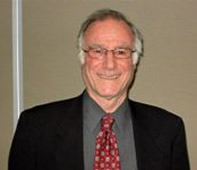Abstract
Patients with fixed equinus and associated angular and rotational deformities, who have had multiple previous surgeries, present a significant challenge to the orthopaedic surgeon. We chose to correct these deformities with supramalleolar extension wedge osteotomies in 21 feet in 13 patients between 1991 and 2002. The median age at presentation was 11 years (range: 2-17 years). An average correction of 20" of extension (range: 10-33") was required to achieve a plantigrade foot. Fourteen of 20 feet (70%) remained plantigrade at a mean follow-up of 6 years. Unlike traditional procedures such as triple arthrodesis and talectomy, this technique preserves preoperative mobility, avoids shortening of the foot, and restores a plantigrade and functional attitude.
1. Introduction
Management of residual fixed equinus deformity presents a formidable problem. These feet are frequently stiff, deformed, and scarred by previous failed soft tissue surgeries. Orthoses and casts are ineffective and may be associated with pressure sores, ulcers, and even osteomyelitis [1]. Further soft tissue releases usually fail and may worsen stiffness. Traditional salvage procedures for this deformity include triple arthrodesis and talectomy. Arthrodesis increases foot stiffness and shortening, and imposes abnormal stresses on the midfoot and ankle joints that can lead to early degenerative disease, and ultimate failure. Talectomy does not guarantee a plantigrade attitude, shortens the foot, does not correct all deformities and is prone to relapse [2]. Painful degeneration frequently occurs at the tibiocalcaneal joint. The Ilizarov distractor has also been utilized to correct equinus deformity, but has been associated with pin tract infections, increased stiffness, and occasional distal tibial growth plate disturbance [3]. Supramallaleolar osteotomy avoids these shortcomings by correcting deformity above the ankle joint, thus maintaining foot length and mobility.
2. Methods
We reviewed 20 feet in 12 patients with fixed equinus and equinovarus deformities who had undergone supramalleolar wedge osteotomy from 1991 to 2002. Five patients were arthrogrypotic (9 feet), four had classic resistant clubfeet (6 feet), one had spastic diplegia (2 feet), one had thrombocytopenia-absent radius (TAR) syndrome (2 feet), and one had diastrophic dysplasia (1 foot). There were five boys and seven girls in this series. The median age at the time of surgery was 10 years (range: 2-17 years). The mean range of ankle motion preoperativelywas 10" (range: 0-20"). There was associated rigid varus in 14 feet and internal rotation in 9 feet. Residual forefoot adduction was present in nine feet. Eight feet were associated with ipsilateral knee contractures greater that 20".
All feet had undergone an average of two procedures prior to presentation (range: 1-5 procedures). Although the exact nature of these procedures was unclear because many were performed at outside institutions, most procedures involved soft tissue releases. Bilateral talectomies had been previously performed in the girl with diastrophic dysplasia. One arthrogrypotic patient underwent previous bilateral extension supramalleolar osteotomies at the age of 3 years. Her equinus deformity relapsed in both feet at 10 years, when she presented for repeat supramalleolar osteotomies.
After informed consent was obtained, a midthigh tourniquet was applied and surgery was performed under general anesthesia. The distal tibia was osteotomized just superior to the growth plate through an anteromedial approach. An oblique fibular osteotomy was performed separately at a slightly higher level to allow adequate motion at the tibial osteotomy but provide some stability. Rotation was corrected first. Equinus was then addressed by an anterior tibial wedge resection (Fig. 1). When necessary, the wedgewas angled anterolaterally to correct varus alignment. The osteotomy was fixed with two smooth crossed percutaneous Steinmann pins. The pins were bent and cut outside the skin and a long leg cast was applied (Fig. 2a and b). External fixation was used in one patient with diastrophic dysplasia, where calf bulk and a short foot precluded casting (Fig. 3).
Supramalleolar osteotomy can produce a plantigrade foot attitude, but does not address metatarsus adductus, cavus, or toe flexor contractures. For this reason, basal metatarsal osteotomies were performed in nine feet to correct residual forefoot adduction and rotational deformities. Additional limited soft tissue procedures were performed in six feet. These corrections included distal toe flexor tenotomies in 3 feet (2 patients), plantar fascia releases in 2 feet (1 patient), and abductor hallucis recessions in 2 feet (1 patient) (Table 1).
In this series, eight knee contractures in four patients were treated concurrently at the time of supramalleolar extension osteotomy. Correction was achieved by four extension distal femoral osteotomies (2 patients), two proximal hamstring releases (1 patient), and two manipulations with extension casting and subsequent wedging (1 patient). These procedures helped achieve sagittal balance.
Some angular deformity of the distal tibia was accepted to achieve a plantigrade foot. Patients and their parents accepted this as a prerequisite for obtaining a functional and plantigrade foot.
All patients were initially kept non-weight bearing until early callus appeared radiographically, generally at 4 weeks. The long leg cast and pins were then removed, and patients were placed in a short leg walking fiberglass cast. This cast was maintained until the osteotomy was healed radiographically and clinically. Following removal of the cast, the plantigrade attitude was maintained by a dynamic dorsiflexing night ankle-foot orthosis during the growth years (Fig. 4). This orthosis is cut out posteriorly to permit dorsal hinging, and dorsiflexion is held by medial and lateral adjustable straps from the metatarsal heads to the top of the orthosis.
All patients were followed clinically to assess possible recurrence of deformity. Patients and parents were also asked to complete a subjective questionnaire. They scored their mobility, before and after surgery, on the following scale: 0 for wheelchair bound, 1 for standing only, 2 for household ambulation, 3 for community ambulation with pain, 4 for unlimited community ambulation, 5 for unlimited high impact activity. The questionnaire addressed satisfaction and cosmesis on a 0 to 10 score. Patients were also asked whether they would repeat the procedure.
3. Results
. . .Continue to read rest of article (PDF).










